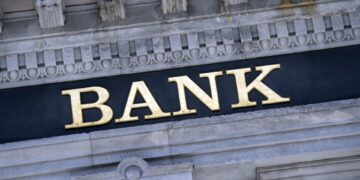Revolution 2021: Here’s How Your Bank Is Using Your Data To Accelerate Its Growth

Have you gone cashless with your payments? Well, here is how that is helping banks go forward in this new era of banking.
Every time you use your debit or credit card, two things are happening. Your payment is hassle-free as you don’t have to carry large amounts of cash with you and your bank is getting necessary data to leverage its business. And that is a good thing.
Since demonetization, majority of the country has adopted digital payment methods, slowly but surely. This rise has resulted in large amounts of data for banks to bank on. How? For instance, let’s talk about ATMs.
How many of us visit an ATM often? The number of visits has drastically gone down. This is a costly affair for banks because they have to pay interbank charges for every swipe that is not done from the banks’ own ATM. As ATMs are not being used frequently, it is important for banks to assess where they should open more ATMs and where they should shut them down. This is where big data comes into play.
Data Is Transforming The Banking Sector
Kerala headquartered Federal Bank saved costs by using big data to make new plans for their ATM locations. According to Shalini Warrier, Executive Director and COO, Federal Bank, big data has helped them gain deeper insight in terms of ATM availability and performance, the effectiveness of marketing campaigns, and other business aspects to help them make better business decisions.
IndusInd Bank’s vision is data and analytics-driven. For the sake of its users, the bank is relying on data for better customer service, fraud analytics and risk analytics, things that are crucial to make banking experience smooth.
According to Biswabrata Chakravorty, CIO, IndusInd Bank, “To achieve this aim, an Enterprise Data Warehouse was built on Azure cloud which manages and integrates more than 50 banking systems, generates business dashboards, and reports in a matter of a few hours while dealing with data in the volumes of terabytes.”
What does that mean? With the help of a data processing infrastructure, dashboards with several data points and reports will be available before the start of the business day. With this simplified information, managers can quickly analyze necessary information without any dependency on IT teams.
Do you get phone calls for loans when you aren’t even planning for one? There’s a solution for that. DBS Bank is investing in analytics and customer propensity assessment to make sure the right banking products are being targeted to the right customers via analytics. Solves a problem, doesn’t it? To provide its users with seamless service on their app, DBS Bank is using analytics to map the journey of the users to understand their requirements. Anand Natarajan, COO, DBS Bank has said that they have partnered with Cloudera to build a central data team and enterprise data hub, all this for efficient servicing.
Axis Bank is well into analytical banking transformation. They have an in-house analytics team to ensure customers get personalized banking experience. Not just this, they also have a system in place that can predict loan or card defaulters, similar to Yes Bank that is using an analytical approach to obtain scalable data about what the customer wants.
The Indian banking sector has reached a point where it now understands the key to growth, efficient customer service, thanks to digital transformation. With various data processes being set up and used by banks to map and track customer navigation, the way forward is better banking solutions using the data you provide by going digital.
Share This Article
Do the sharing thingy








